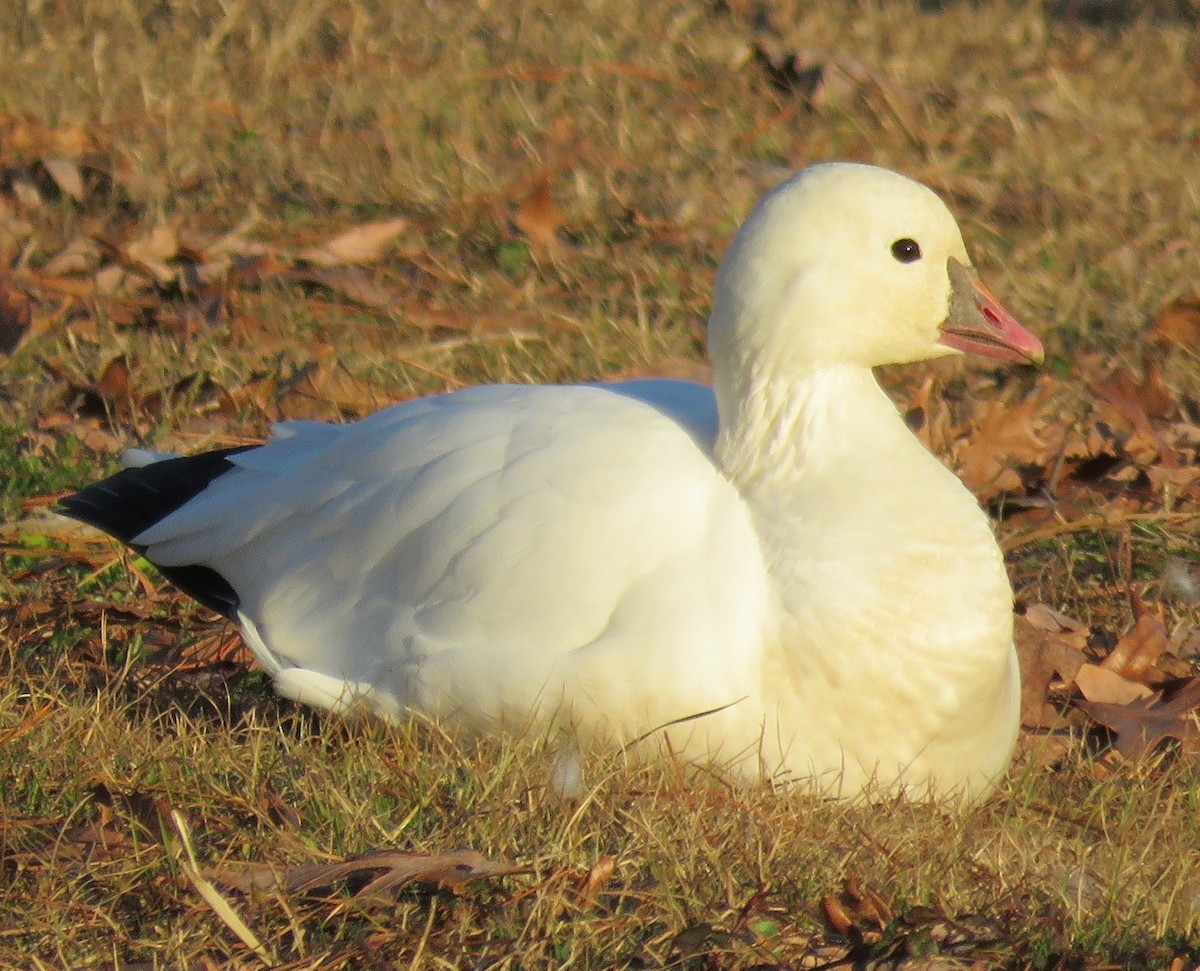Ross's Goose
A species of White geese Scientific name : Anser rossii Genus : White geese
Ross's Goose, A species of White geese
Botanical name: Anser rossii
Genus: White geese
Content
Description General Info
 Photo By Steve McInnis
Photo By Steve McInnis Description
Ross's goose have a rounded head above a short neck. The bill is short and triangular, and has a bluish base with warty structures that increase in prominence with age. Adults are identified by all-white secondary feathers, while juveniles' will be dark centered. Females average 6% smaller than males. Legs will begin as olive gray on goslings and turn deep red as they mature. There is no geographic variation or identified subspecies. Related species include other Anser geese, particularly the lesser snow goose, where the two mtDNA lineages imply frequent hybridization. Two hypotheses about the evolution of Ross's goose are that they arose from a population of snow geese that were isolated by glacial advance or in a refugium that remained ice free. Measurements: Male Length: 23.2-25.2 in (59-64 cm) Weight: 42.3-55.3 oz (1198-1567 g) Wingspan: 44.5-45.7 in (113-116 cm) Female Length: 22.6-24.4 in (57.3-62 cm) Weight: 37.6-51.3 oz (1066-1454 g) 
Size
41 - 81 cm
Life Expectancy
10-22.5 years
Nest Placement
Ground
Clutch Size
2 - 6 eggs
Incubation Period
1 brood
Number of Broods
19 - 25 days
Feeding Habits
Ross's Goose primarily consume plant matter, gravitating towards roots, shoots, seeds, and grains. They forage by grazing on sedges, grasses, chickweed, clover, bulrush, and spikerush, while also eating domestic grains like millet, barley, rice, and corn. Typically, ross's Goose feed standing or walking, and they rarely dig for roots unless the ground is softened by rain.
Habitat
Ross's Goose primarily inhabit arctic and subarctic regions, thriving in the flat plains and marshy tundra. They prefer dry, low arctic tundra for breeding, close to sedge-rich areas and occasionally near dwarf birches and willows. Habitually seen at altitudes conducive to these environments, ross's Goose favor a cold climate. During migration, they utilize marshes and agricultural lands, feeding on grains and wet meadow vegetation. Their wintering grounds consist of wetlands, grasslands, and fields, with a preference for nocturnal roosts in aquatic habitats.
Nest Behavior
Female ross's Gooses are solely responsible for nest building, using materials from their surroundings, including their own down. They generally create larger and better-insulated nests than their relatives, the Lesser Snow Goose.
Nest Characteristics
Ross's Goose's nests are typically located on tundra vegetation and favor islands within bodies of water. They are constructed using local plant matter and down feathers, measuring an average of 18.4 inches wide with a 6.3 inches wide and 3 inches deep interior cup.
Dite type
Herbivorous
General Info
Feeding Habits
Bird food type
Sounds
Call
Recording location: United States
Behavior
Ross's Goose showcase a strong sense of pair bonding, often monogamous, with distinctive courtship rituals that include yelping calls and head dips. Their nesting is densely communal, sharing space with Lesser Snow Geese, and both partners actively defend their selected territory. They display unique behavior when dealing with intruders by hissing or even engaging in physical conflict, followed by a 'triumph ceremony' with their mates post-altercation. The incubation of eggs is a maternal duty, whereas the males stand guard. Both parents are involved in caring for their offspring. Ross's Goose also undergo a molting period in lowland areas, rendering them temporarily flightless before they migrate again. These geese do not always maintain family groups post-migration, contrasting them with larger goose species.
Species Status
The number of nesting birds in the Queen Maud Gulf hit a record low of 2,000-3,000 in the early 1950s due to extensive shooting and trapping and their subsequent sale in California markets. Hunting of Ross's geese was made illegal in the U.S. in 1931. When populations on wintering grounds began to increase again, restricted hunting was introduced. Today, the Ross's goose is protected under the Migratory Bird Treaty Act. 

 Photo By Steve McInnis
Photo By Steve McInnis